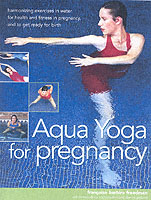- ホーム
- > 洋書
- > 英文書
- > Science / Mathematics
Full Description
The failure of any welded joint is at best inconvenient and at worst can lead to catastrophic accidents. Fracture and fatigue of welded joints and structures analyses the processes and causes of fracture and fatigue, focusing on how the failure of welded joints and structures can be predicted and minimised in the design process.Part one concentrates on analysing fracture of welded joints and structures, with chapters on constraint-based fracture mechanics for predicting joint failure, fracture assessment methods and the use of fracture mechanics in the fatigue analysis of welded joints. In part two, the emphasis shifts to fatigue, and chapters focus on a variety of aspects of fatigue analysis including assessment of local stresses in welded joints, fatigue design rules for welded structures, k-nodes for offshore structures and modelling residual stresses in predicting the service life of structures.With its distinguished editor and international team of contributors, Fracture and fatigue of welded joints and structures is an essential reference for mechanical, structural and welding engineers, as well as those in the academic sector with a research interest in the field.
Contents
Contributor contact detailsPrefaceIntroductionIntroductionLinear elastic fracture mechanicsFatigueLayoutPart I: Analysing fracture of welded joints and structuresChapter 1: Constraint-based fracture mechanics in predicting the failure of welded jointsAbstract:1.1 Introduction to constraint-based elastic-plastic fracture mechanics1.2 Constraint parameters1.3 Tabulation of Q-solutions1.4 Development of a failure assessment diagram (FAD) approach to incorporate constraint1.5 Effect of weld mismatch on crack tip constraint1.6 Full field (local approach) analysis for fracture assessment1.7 ConclusionChapter 2: Constraint fracture mechanics: test methodsAbstract:2.1 Introduction2.2 High strains2.3 Two-parameter fracture mechanics2.4 Development of the single edge notch tension (SENT) test2.5 Standardising the single edge notch tension (SENT) test2.6 Conclusions2.8 Appendix: Codes and standards2.9 NomenclatureChapter 3: Fracture assessment methods for welded structuresAbstract:3.1 Introduction3.2 Development of engineering critical assessment (ECA) methods3.3 The failure assessment diagram (FAD) concept3.4 Specific engineering critical assessment (ECA) methods: R63.5 Specific engineering critical assessment (ECA) methods: BS 7910/PD64933.6 Specific engineering critical assessment (ECA) methods: Structural Integrity Procedures for European Industry (SINTAP)/European Fitness- for-service Network (FITNET)3.7 Specific engineering critical assessment (ECA) methods: American Petroleum Institute (API)/ American Society for Mechanical Enginners (ASME)3.8 Future trendsChapter 4: The use of fracture mechanics in the fatigue analysis of welded jointsAbstract:4.1 Introduction to fracture mechanics4.2 Technical application of fracture mechanics4.3 Fatigue assessment of welded joints using fracture mechanics4.4 Examples of practical application4.5 ConclusionsPart II: Analysing fatigue of welded joints and structuresChapter 5: Fatigue strength assessment of local stresses in welded jointsAbstract:5.1 Introduction5.2 Types of stress5.3 Factors affecting the fatigue strength5.4 Fatigue strength assessment5.5 ConclusionsChapter 6: Improving weld class systems in assessing the fatigue life of different welded joint designsAbstract:6.1 Introduction6.2 Historic view6.3 Weld class system ISO 58176.4 Weld class systems at Volvo6.5 A consistent and objective weld class system6.6 Discussion6.7 Conclusions6.8 Future trends6.9 Sources of further information and adviceChapter 7: Fatigue design rules for welded structuresAbstract:7.1 Introduction7.2 Key features of welded joints influencing fatigue7.3 Fatigue crack propagation7.4 Design rules7.5 Future developments in the application of fatigue rules7.6 Conclusions7.8 Appendix: fatigue design codes and standardsChapter 8: Fatigue assessment methods for variable amplitude loading of welded structuresAbstract:8.1 Introduction8.2 Fatigue damage and assessment for variable amplitude loading8.3 Variable amplitude fatigue testing8.4 Future trends8.5 Source of further information and adviceChapter 9: Reliability aspects in fatigue design of welded structures using selected local approaches: the example of K-nodes for offshore constructionsAbstract:9.1 Introduction9.2 Selected decisive design parameters9.3 Selected design concepts by the example of K-nodes9.4 ConclusionsChapter 10: Assessing residual stresses in predicting the service life of welded structuresAbstract:10.1 Introduction10.2 Origins and types of stress10.3 Modification of stresses after welding10.4 Measurement10.5 Conclusions10.6 AcknowledgementsChapter 11: Fatigue strength improvement methodsAbstract:11.1 Introduction11.2 Fatigue strength of welded joints11.3 Increasing the fatigue strength by improved design11.4 Improvements obtained by special plate material, filler materials or welding methods11.5 Special welding methods11.6 Post-weld improvement methods11.7 Future trends11.8 ConclusionsIndex








